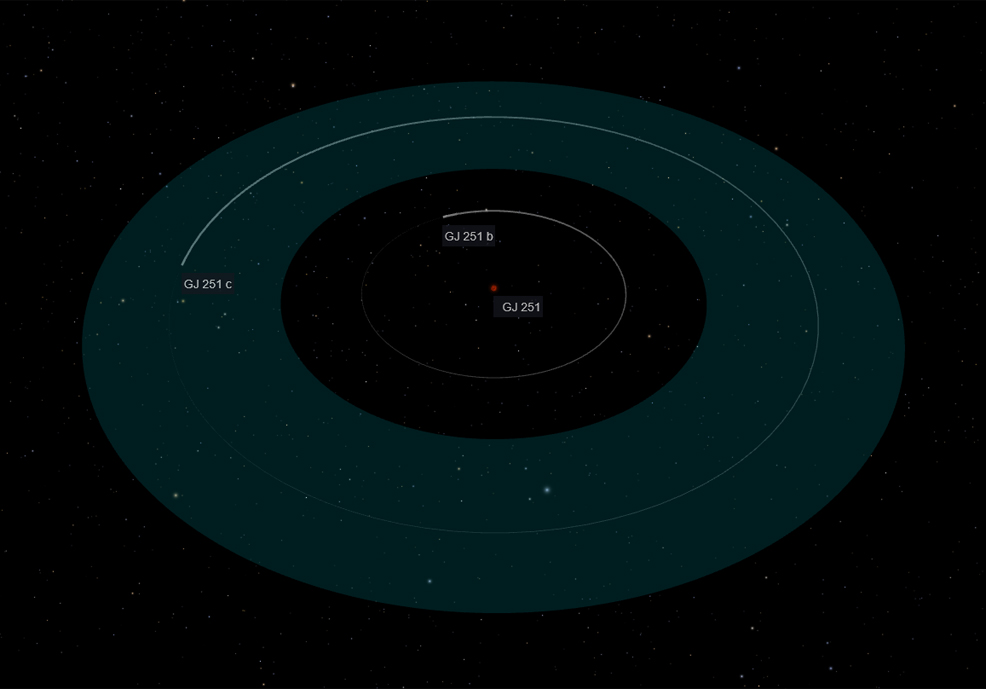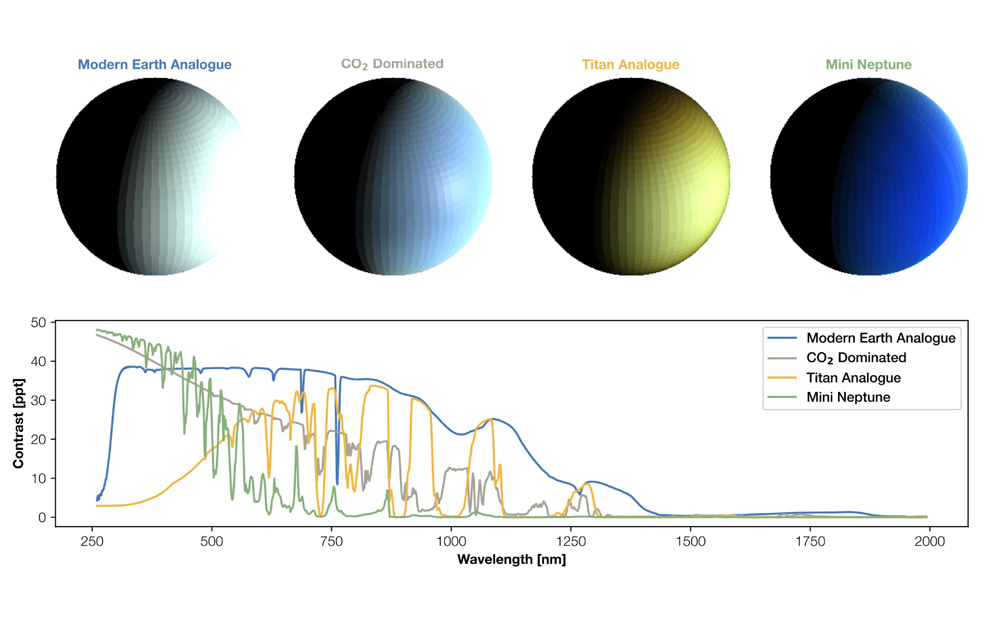
19th November 2025 Super-Earth in habitable zone found 18 light-years away A newly discovered exoplanet known as GJ 251 c lies just 18 light-years away and orbits within the so-called habitable zone of a red dwarf star, making it one of the most exciting prospects in the search for life beyond Earth.
The number of confirmed exoplanets recently passed the 6,000 mark, with new worlds continuing to be added nearly every week. Yet only a small fraction orbit at distances where liquid water may exist. Fewer still have the right size and density to qualify as genuine Earth-like candidates. Astronomers recently announced the discovery of GJ 251 c, a planet that has triggered excitement in the research community because it lies close enough for detailed study and meets several of the criteria for a potentially life-supporting environment. GJ 251 c orbits the star GJ 251, also known as Gliese 251, an M-type red dwarf located 18.2 light-years from our Solar System. The star is 0.36 times the mass of our Sun and 0.36 times its radius, producing only 1.5 % of the Sun's luminosity. This lower energy output means its habitable zone lies much closer in than for a G-type (Sun-like) star. A research team led by Pennsylvania State University (PSU) and the University of California, Irvine (UCI) analysed more than two decades of radial-velocity measurements of GJ 251. They monitored the star with instruments such as the Habitable-zone Planet Finder (HPF), a near-infrared spectrograph mounted on the 10-metre Hobby-Eberly Telescope at McDonald Observatory in Texas, which specialises in detecting tiny wobbles in cool stars. In addition, they used a spectrograph called NEID, which operates on the 3.5-metre WIYN Telescope at Kitt Peak in Arizona and can measure Doppler shifts with a precision down to tens of centimetres per second. Combined with archival data from Keck HIRES, CARMENES, and SPIRou, the researchers observed tiny shifts in the motion of GJ 251 that revealed the presence of a new planet. One other planet, GJ 251 b, is already known to exist in the system, discovered in 2020 and with a similar mass, orbiting its star every 14 days at a distance of 12.1 million km (7.5 million miles).
GJ 251 c has a mass about 3.8 times that of Earth and completes an orbit every 54 days. It has a semi-major axis of 0.2 astronomical units (AU), meaning it circles the star at one-fifth of the distance between Earth and the Sun. Because the host star is much fainter than the Sun, this orbital distance places the planet almost perfectly within the star's habitable zone – the region where temperatures might allow liquid water on a suitably atmosphered rocky world. Given its mass, the planet falls into the super-Earth category, larger than our Earth but smaller than ice giants like Neptune. Some models suggest a radius of about 1.8 Earth-radii based on that mass and an Earth-like composition. However, orbiting in the right region alone does not guarantee habitability. A planet also needs an atmosphere that can hold the correct surface pressure and temperature. The discovery team collaborated with researchers from the Consortium on Habitability and Atmospheres of M-dwarf Planets (CHAMPS) to model a range of possible atmospheres for GJ 251 c and to test how each one might interact with the radiation from its star. Their results showed that an atmosphere identical to Earth's would leave the planet too cold, because it would not trap enough heat to keep surface water stable. By contrast, an atmosphere consisting primarily of carbon dioxide (CO₂) would create surface temperatures far more comparable to those on Earth.
The fact that GJ 251 c lies so close to Earth makes it a highly valuable target for next-generation telescopes, potentially including the new thirty-metre class of ground-based instruments, which could directly image the system or provide detailed measurements of its atmosphere. However, the host star poses challenges. Red dwarfs often exhibit magnetic activity and flaring, which can disturb the star's light and complicate radial-velocity analysis, as well as potentially erode a planet's atmosphere over time. The discovery team used advanced modelling to discriminate stellar activity from the genuine planetary signal. A paper on their work appears in The Astrophysical Journal. "We are at the cutting edge of technology and analysis methods with this system," said Corey Beard, PhD, a data scientist at Design West Technologies and the study's lead author. "While its discovery is quite statistically significant, we are still determining the status of the planet due to the uncertainty of our instruments and methods. We need the next generation of telescopes to directly image this candidate, but what we also need is community investment." "This discovery represents one of the best candidates in the search for atmospheric signature of life elsewhere in the next five to ten years," said co-author Suvrath Mahadevan, Professor of Astronomy at Penn State. "We are always focused on the future," he added. "Whether that's making sure the next generation of students can engage in cutting-edge research or designing and building new technology to detect potentially habitable planets."
Comments »
If you enjoyed this article, please consider sharing it:
|
||||||









